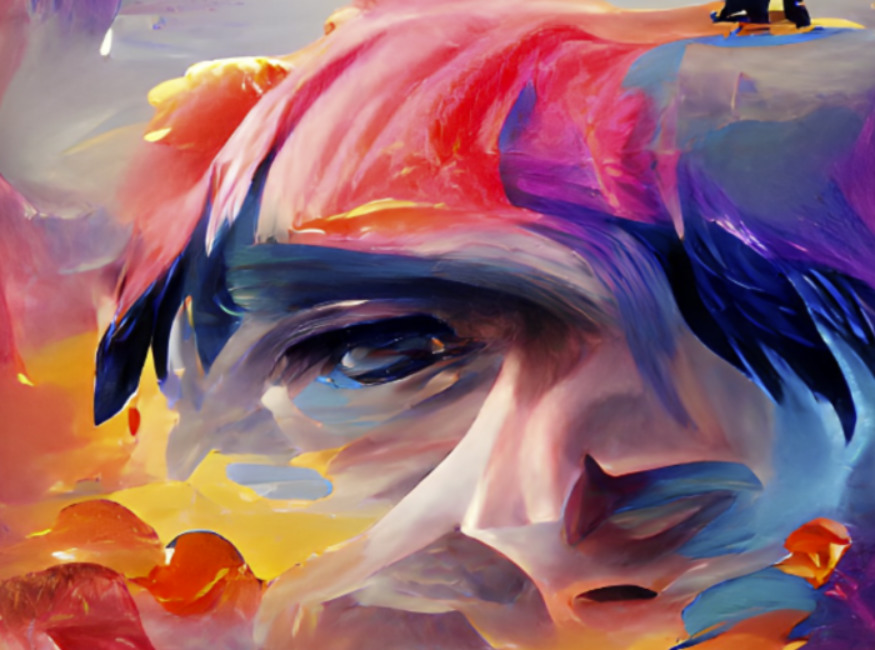在过去的十年里,人工智能一直在忙忙碌碌试图改变现实。我们已经有了电脑视觉驱动的3D透视画,引领潮流的风格转换,病毒式的逼真自拍调整、自拍修饰、换脸,当然包括深度伪造以及大量轻浮(和搞笑)的自拍滤镜。In the past ten years, artificial intelligence has been busy trying to change reality. We already have computer vision-driven 3D perspective paintings, trend-setting style transitions, viral and realistic selfie adjustments, selfie retouching, face changes, and of course deep fakes and a lot of frivolous (and funny) selfie filters.
Artificial intelligence-driven visual remixing has shown time and time again that it can grab attention. Although once the novelty of artificial intelligence generation effects disappears, keeping "eyes" will become more difficult. Now, the focus of developers has begun to shift to the creativity and productization of neural networks and GANs (Generative Adversarial Networks), which is a game change. In other words, the machine learning framework is inspired by human prompts when retouching, reshaping, or generating models. Wombo is a Canadian start-up company that was previously eye-catching for its artificial intelligence lip language video application of the same name. Another application is launched, called Dream (available in iOS and Android versions), which uses artificial intelligence to create original "artwork" based on text prompts. Its use is super simple. You only need to describe what you want it to paint, such as "a terrible tree" or "the worst sandwich in history", and choose a style from the choices provided (mystery, baroque, fantasy art, steampunk, etc.) , Or select "No Style"; then click Create.
Then, within ten seconds, the application will display your completed "artwork". In these ten seconds of creative process, you won't even feel bored, because you can see the work process of artificial intelligence. The application shows the rapid evolution of modeling, from the initial markup, through some non-artificial quick additions to enrich the canvas, and then to the final creation of the artwork. Some of these generated art works look a little impressive. Some are not the same, so you can continue to ask for new images from the same prompt until you create a work you like.
Once a new artwork appears, the app will lose no time in trying to sell it, popping up an option to "buy print" and linking to its online store, which seems to be an ingenious way to turn visual skills into actual income. It offers a "custom Wombo dream print" service, with matte posters starting at $20 and framed prints at $45. If this start-up company can convert a dozen or so seconds of processing into more than $20 in revenue, this may become a good revenue pipeline. By the end of last month, users had generated more than 10 million pictures. About a month after its Android version was launched on Google Play, it has been downloaded more than 1 million times.
人工智能驱动的视觉重混已经一次又一次地表明,它可以抓住注意力。尽管一旦人工智能生成效果的新奇感消失,保持"目光"就会变得更难。现在,开发者的焦点开始转移到神经网络和GAN(生成对抗网络)的创造力和产品化,这是一个游戏规则的改变。也就是说,机器学习框架在进行修饰、重塑或生成模型时,是以人类的提示为灵感、
Wombo是一家加拿大初创公司,早先因其同名的人工智能唇语视频应用而夺人眼球,最近又推出了另一款应用,名为Dream(有iOS和Android版本),它使用人工智能基于文本提示来创造原创"艺术品"。它的使用方法超级简单。你只需描述你想让它画什么,比如"一棵可怕的树"或"历史上最糟糕的三明治",从提供的选择中挑选一种风格(神秘、巴洛克、幻想艺术、蒸汽朋克等),或选择"没有风格";然后点击创建。
然后,在十几秒钟内,应用程序就会显示你完成的"艺术品"。在这十几秒钟的创作过程中,你甚至不会感到无聊,因为你可以看到人工智能工作过程。该应用程序显示了建模的快速演变,从最初的标记,通过一些非人为的快速添加来充实画布,然后到最终完成艺术品的创作。这些生成的艺术作品中,有些看起来有点令人印象深刻。有些则不太一样,因此,你可以继续要求从同一提示中获得新的图像,直到创作出你喜欢的的作品。
一旦出现新的艺术品,该应用程序就会不失时机地试图出售它,弹出一个"购买印刷品"的选项,链接到其网络商店,看起来是将视觉技巧转化为实际收入的一种巧妙方式。它提供的"定制Wombo梦想印刷品"服务,哑光海报起价20美元,带框印刷品起价45美元。如果这家初创公司能够将十几秒的处理过程转化为20美元以上的收入,这可能会成为一个不错的收入管道。到上个月底,用户已经生成了1000多万张图片。其Android版本在Google Play上推出后一个月左右,已经有超过100万次的下载量。
